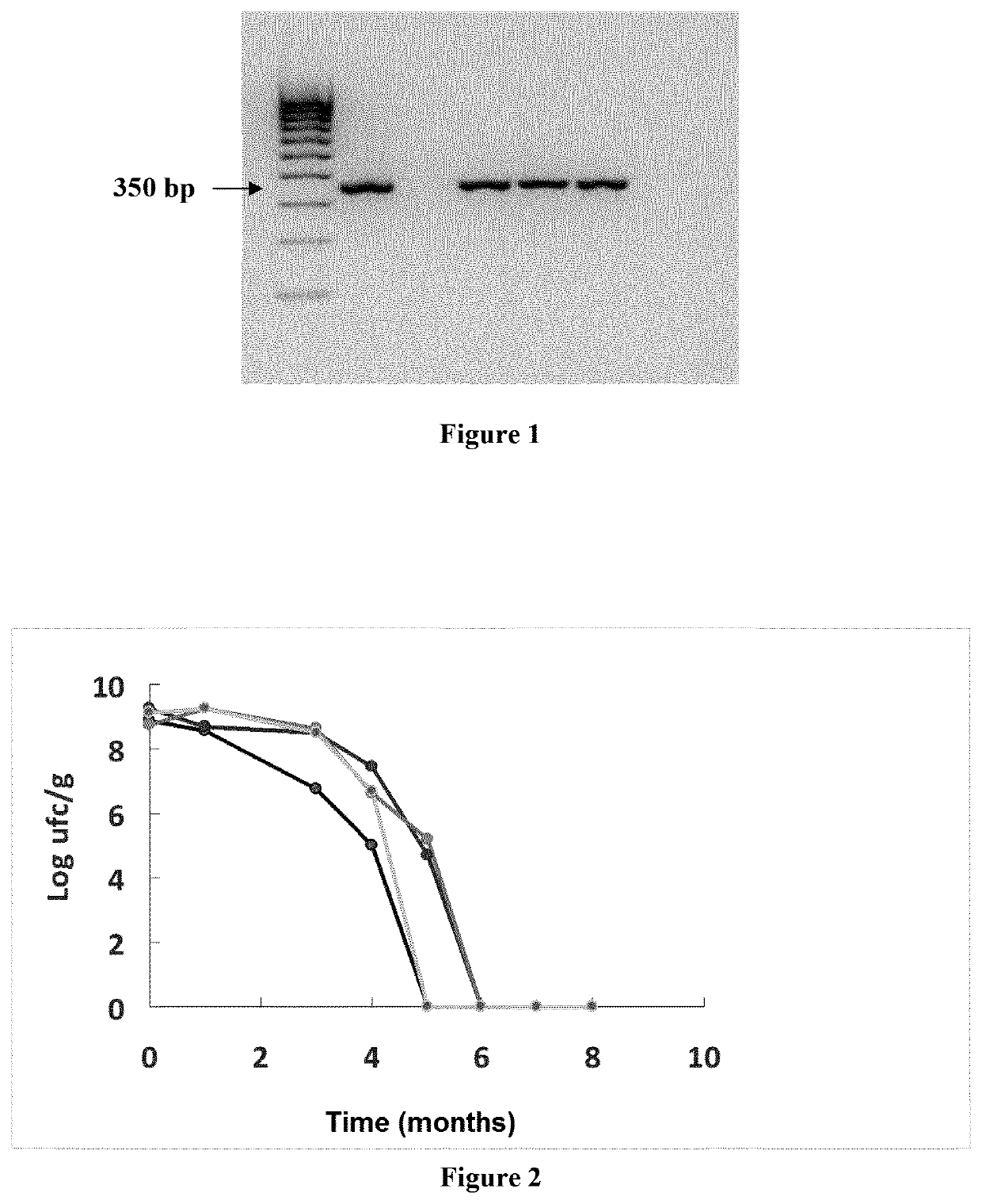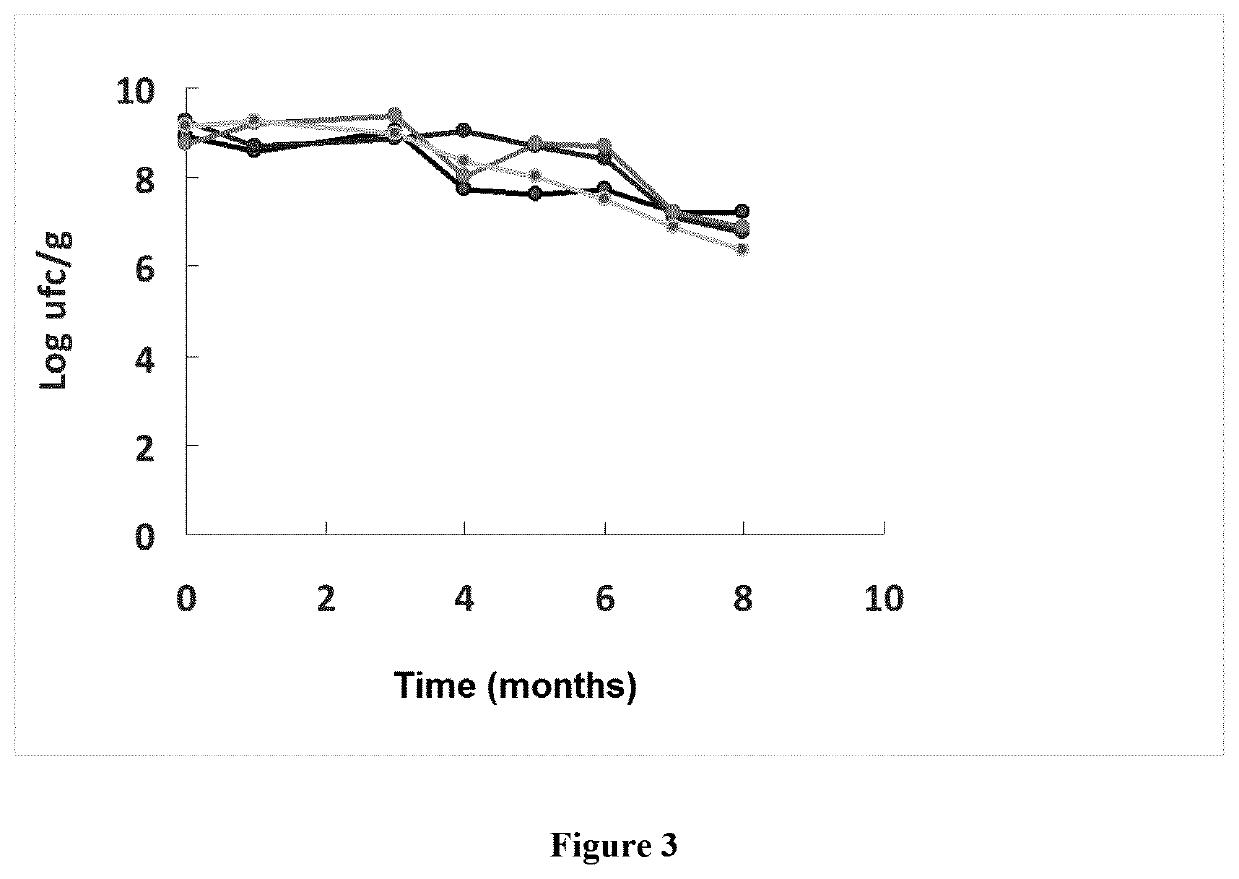Composition comprising new lactobacillus salivarius strains and method for the prevention and treatment of otitis and upper respiratory infections
- Summary
- Abstract
- Description
- Claims
- Application Information
AI Technical Summary
Benefits of technology
Problems solved by technology
Method used
Image
Examples
example 1
ation and Characterization of the Strain PS7
[0053]1.1. Isolation from Vaginal Swab and Identification (Species and Strain)
[0054]Lactobacillus salivarius PS7 was isolated in the frame of a study to evaluate the bacterial diversity of the Lactobacillus group in human milk and the vagina of healthy women and undersand their potential translocation from the gut. Women were enrolled in this study according with the following criteria: (a) healthy women without present or past underlying conditions (including mastitis); (b) normal full-term pregnancy; and (c) absence of infant and / or maternal perinatal problems (including mastitis). Milk samples, vaginal swabs and rectal swabs were aseptically collected in sterile tubes and swabs.at day 7 after delivery and kept at 4° C. until delivery to the laboratory, which happened within the first three hours after collection. The study from which this strain was isolated was was approved by the Ethical Committee on Clinical Research of Hospital Clin...
example 2
xicity Assays
2.1. Acute and Repeated Dose (4-Weeks) Oral Toxicity Studies
[0100]Wistar male and female rats (Charles River Inc., Marget, Kent, UK) were acclimated for 7 days prior to study initiation with an evaluation of health status. The rats were individually housed in polycarbonate cages with sawdust bedding and maintained in environmentally controlled rooms (22±2° C. and 50%±10% relative humidity) with a 12 h light-dark cycle (light from 08.00 to 20.00 h). Food (A03 rodent diet, Scientific Animal Food and Engineering, Villemoisson-sur-Orge, France) and water were available ad libitum. The rats were 56-days old at the initiation of treatment. Acute (limit test) and repeated dose (4 weeks) studies were conducted in accordance with the European Union guidelines (EC Council Regulation No. 440, 2008a,b). Both studies were undertaken in accordance with the ethics requirements and authorized by the Official Ethical Committee of the Complutense University.
[0101]In the acute (limit test...
example 3
and Prevention of Otitis in Children
3.1. Subjects
[0118]Otitis-prone children (n=64) aged 10 months to 6 years were recruited (their parents were mainly university professors, CSIC scientists or health-related professionals). The inclusion criteria were at least four episodes of AOM during the preceding 12 months, or at least three episodes during the preceding 6 months (del Castillo et al., 2012). Children on regular medication, with chronic illnesses, Down's syndrome, lip or palatal cleft, or who were already scheduled for tympanostomy or adenoidectomy during the study were excluded. Those who had undergone tympanostomy or adenoidectomy during the preceding 6 months were also excluded, unless they had suffered at least three episodes of AOM since the operations. The parents signed their informed consent after receiving information about the study.
3.2. Intervention with L salivarius PS7
[0119]This study was carried out between September 2012 and April 2015. During the 6-month interve...
PUM
 Login to View More
Login to View More Abstract
Description
Claims
Application Information
 Login to View More
Login to View More - R&D
- Intellectual Property
- Life Sciences
- Materials
- Tech Scout
- Unparalleled Data Quality
- Higher Quality Content
- 60% Fewer Hallucinations
Browse by: Latest US Patents, China's latest patents, Technical Efficacy Thesaurus, Application Domain, Technology Topic, Popular Technical Reports.
© 2025 PatSnap. All rights reserved.Legal|Privacy policy|Modern Slavery Act Transparency Statement|Sitemap|About US| Contact US: help@patsnap.com


